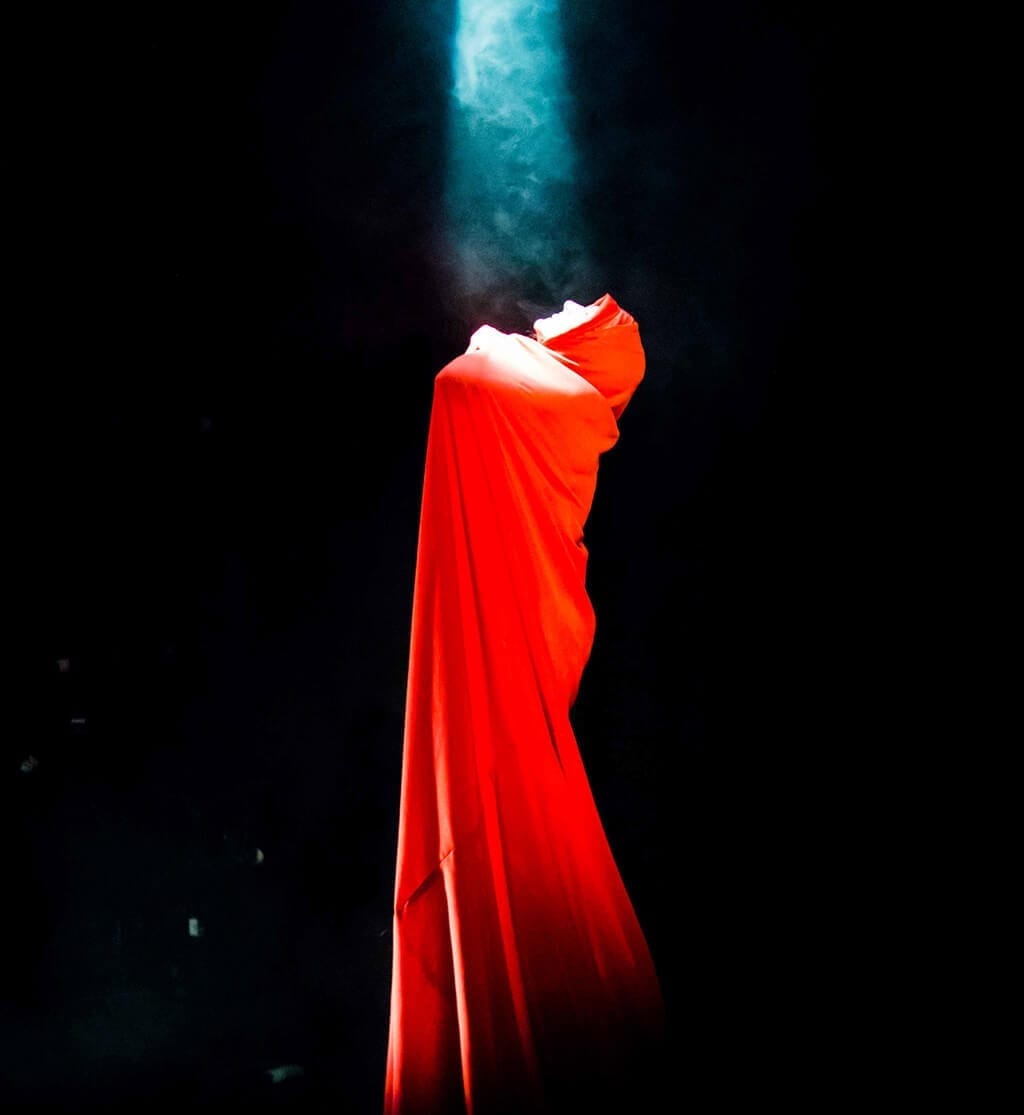Wolf Red is billed as an example of “Physical Theater”, a new term to me. In this case, it is non-narrative, theatrical, poetic–a full sister to modern dance and performance art.
In this one-woman show, seen here as part of a festival of solo performances, an intense, fantastically committed Elinor Randle embodies the terrifying and terrified characters and ferocious animal forces suggested by Little Red Riding Hood and other archetypes from the fairy tale world. On a nearly bare set, she propels her sinewy frame through quirky and dramatically expressive physical feats, evoking an ascending, incanting red-robed witch, a damsel in search of her prince, a girl breathlessly running and running past her limits to save her life from overpowering menace. Randle’s gaze is outward to the audience, at all instances controlled. She confronts us with her physicality in a sequence of otherworldly micro-portraits, at times like a living Lord Of The Rings video game, at times like a Rauschenberg collage painting, with herself as the main sacrificial object.
In the second half, Randle takes us through passages where Doris Day-like gender roles—complete with blonde wig and pink Playtex gloves–are lampooned and exploded to a cheery soundtrack. But the sheer strength of her self-presentation in the first half by then has already exploded any conventions associated with the male gaze. She plainly expects to be viewed on her own terms as an artist. One of the best qualities of Wolf Red is how it brings us well beyond conventional expectations of female bodies being presented on stage and makes us feel that we’re well into a new era of artistic and theatrical possibilities. The battle of the second half seems a dated critique in her powerful hands.
All of this sound and fury is accomplished on a small stage containing a chair, a bed of sorts, a pitcher, a regrettable box of props, flowing red robes worthy of Aeschylus, and Randle herself in minimal costume. In a very small theater, we are invited to sit as close as possible to the stage. The playing space is marked out with twigs and branches straight from the woods, which you almost inevitably have to cross on the way to and from your seat. This is Into the Woods as the peak of a fever dream. The main emotional impact though, truthfully? Dazzlement for sure, also discomfort, and a feeling of “My G-d, look what this woman is capable of!”
It is no doubt artistically ambitious to try to reach and rattle an audience in this somewhat abstract art form, without the benefit of an old fashioned narrative arc. There is much of value here, and we want to see where these dedicated artists go with it. But the overall effect at this point is a bit more exhausting than revealing or moving. We sense that Randle puts so much out there that there is little chance for her to truly reveal herself and bring us in.

